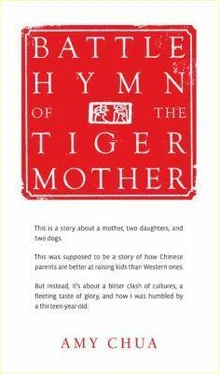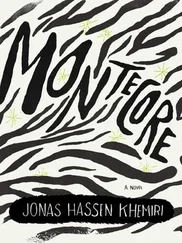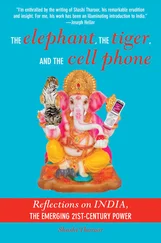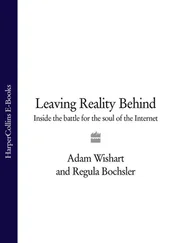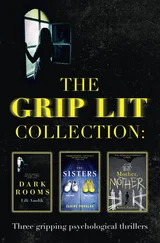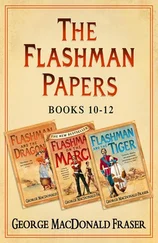I dragged Lulu back. “She’s ready now,” I said brightly.
This time, the admissions director allowed me to accompany Lulu into the testing room. She put four blocks on the table and asked Lulu to count them.
Lulu glanced at the blocks, then said, “Eleven, six, ten, four .”
My blood ran cold. I thought about grabbing Lulu and making a run for it, but the director was calmly adding four more blocks to the pile. “How about now, Lulu — can you count those?”
Lulu stared at the blocks a little longer this time, then counted, “Six, four, one, three, zero, twelve, two, eight .”
I couldn’t stand it. “Lulu! Stop that—”
“No, no — please.” The director put her hand up, an amused look on her face, and turned back to Lulu. “I can see, Louisa, that you like doing things your own way. Am I right?”
Lulu shot a furtive glance at me — she knew I was displeased — then gave a small nod.
“There are eight blocks,” the woman went on casually. “You were correct — even if you arrived at the answer in an unusual way. It’s an admirable thing to want to find your own path. That’s something we try to encourage at this school.”
I relaxed, finally allowing myself to breathe. The woman liked Lulu, I could tell. In fact, a lot of people liked Lulu — there was something almost magnetic about her inability to ingratiate. Thank God we live in America, I thought to myself, where no doubt because of the American Revolution rebelliousness is valued. In China, they’d have sent Lulu to a labor camp.
Ironically, Lulu ended up loving her New York school, while Sophia, who’d always been a little shy, had a harder time. At our parent conference, Sophia’s teacher told us that while she’d never taught a better student, she worried about Sophia socially, because she spent every lunch and recess alone, wandering around the yard with a book. Jed and I panicked, but when we asked Sophia about school, she insisted that she was having fun.
We made it through that semester in New York City, just barely. I even managed to get an offer from NYU, which I almost took. But then a series of unexpected events unfolded. I published a law review article on democratization and ethnicity in developing countries, which got a lot of attention in policy-making circles. Because of that article,Yale unrejected me, offering to make me a tenured professor. Seven years after I couldn’t make it through lunch, I accepted, even though it was a little bittersweet. Nomadic no longer, Jed could finally stop commuting, and Sophia and Lulu settled once and for all into a grade school in New Haven.
By that time, Lulu had also started taking piano lessons with Sophia’s teacher Michelle at the Neighborhood Music School. I felt like I was leading a double life. I would get up at five in the morning and spend half my day writing and acting like a Yale law professor, then rush back home for my daily practice sessions with my two daughters, which in Lulu’s case always involved mutual threats, blackmail, and extortion.
As it turns out, Lulu was a natural musician, with close to perfect pitch. Unfortunately, she hated drilling and wouldn’t concentrate during practice, preferring instead to talk about the birds outside the window or the lines on my face. Still, she progressed quickly through the Suzuki piano books and was a great performer. At recitals, she was never flawless like her sister, but what she lacked in technical precision she more than made up for with a style and musicality every bit the equal of Sophia’s.
Around that time, I decided that Lulu should start a different instrument. Friends with older children had advised me that it was better to have my two daughters pursue different interests, to minimize competition between them. This made especially good sense because Sophia had really started to take off in piano, winning lots of local prizes and often being invited by teachers, churches, and community organizations to perform. Everywhere we went, Lulu had to hear raves about her sister.
Naturally the question arose as to what new instrument Lulu should pick up. My in-laws, liberal intellectual Jews, had strong views about this. They knew of Lulu’s headstrong personality and had overheard the screaming and yelling during our practice sessions. They urged me to go with something low-pressure.
“How about the recorder?” my father-in-law, Sy, suggested. A big strapping man who looks exactly like Zeus, Sy had a thriving psychotherapy practice in Washington, D.C. He’s actually very musical, with a powerful, deep voice. In fact, Jed’s sister also has a beautiful voice, suggesting which side of the family Sophia and Lulu got their musical genes from.
“The recorder ?” my mother-in-law, Florence, asked, incredulous, when she heard about Sy’s suggestion. “How boring.” Florence was an art critic who lived in NewYork City. She had recently published a biography of Clement Greenberg, the controversial critic of modern art who effectively discovered Jackson Pollock and American abstract expressionism. Florence and Sy had been divorced for twenty years, and she generally didn’t agree with anything he said. “How about something more exciting, like a gamelan instrument? Could she learn to play the gong?”
Florence was elegant, adventurous, and cosmopolitan. Years before, she had traveled to Indonesia, where she was captivated by the Javanese gamelan, a small orchestra of perhaps fifteen to twenty musicians who sit cross-legged on the floor and play percussive instruments like the kempul (a set of hanging gongs of different pitches), the saron (a big metal xylophone), or the bonang (a bunch of kettles that are played like drums but sound more like chimes).
Interestingly, the French composer Claude Debussy had the same reaction to the gamelan orchestra as my mother-in-law. For Debussy, as for Florence, the gamelan was a revelation. He wrote to a friend in 1895 that Javanese music was “able to express every shade of meaning, even unmentionable shades.” He later published an article describing the Javanese as “wonderful peoples who learn music as easily as one learns to breathe. Their school consists of the eternal rhythm of the sea, the wind in the leaves, and a thousand other tiny noises, which they listen to with great care, without ever having consulted any of those dubious treatises.”
Personally, I think Debussy was just going through a phase, fetishizing the exotic. The same thing happened to Debussy’s fellow Frenchmen Henri Rousseau and Paul Gauguin, who started painting Polynesian natives all the time. A particularly disgusting variation of this phenomenon can be found in modern-day California: men with Yellow Fever, who date only Asian women — sometimes dozens in a row — no matter how ugly or which kind of Asian. For the record, Jed did not date any Asian women before me.
Maybe the reason I can’t appreciate gamelan music, which I heard when we visited Indonesia in 1992, is that I fetishize difficulty and accomplishment. I don’t know how many hundreds of times I’ve yelled at Lulu, “Everything valuable and worthwhile is difficult! Do you know what I went through to get this job at Yale?” Gamelan music is mesmerizing because it is so simple, unstructured, and repetitious. By contrast, Debussy’s brilliant compositions reflect complexity, ambition, ingenuity, design, conscious harmonic exploration — and yes, gamelan influences, at least in some of his works. It’s like the difference between a bamboo hut, which has its charm, and the Palace of Versailles.
In any case, I rejected the gong for Lulu, as I did the recorder. My instinct was just the opposite of my in-laws’. I believed that the only way for Lulu to get out from under the shadow of her high-performing sister was to play an even more difficult, more virtuosic instrument. That’s why I chose the violin. The day I made that decision — without consulting Lulu, ignoring the advice of everyone around me — was the day I sealed my fate.
Читать дальше
